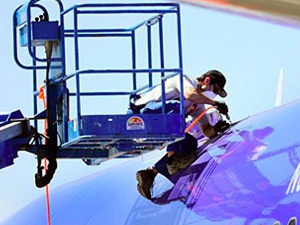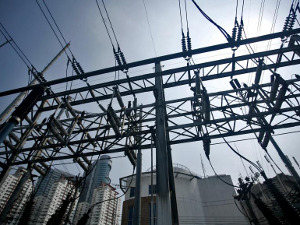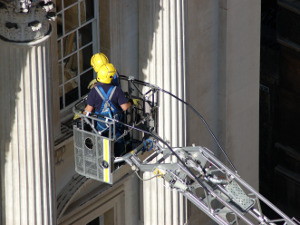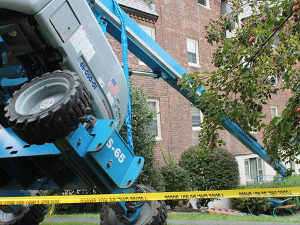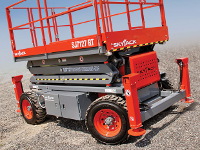Surface preparation
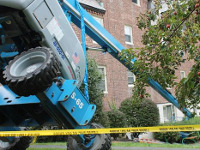
Surface preparation for the use of mobile platforms
Providing a suitable surface for the use of mobile platforms is crucial for the safety of workers and their surroundings. Scissor lifts, aerial work platforms, self-propelled platforms and other types of platforms must be used on a suitable surface. All platforms (with the exception of suspended platforms), are dependent on the ground on which they are placed. If it is stable, then the equipment itself also operates more safely, which prevents work accidents. For this reason, every aerial work platform course includes information on how to prepare the surface for use.
Various types of scissor lifts, basket lifts and other platforms are in use today, including those adapted for use on difficult ground. However, it is always necessary to check and prepare the surface before using a basket lift, scissor lift or column lift or any other type of mobile platform. It is not only responsible for the safety of the work, but also additionally for the convenience of moving the entire device.
The ground must be tested before application - this can be done by visual inspection through to special geotechnical investigations. Here are the most commonly used surfaces and the risks they pose:
areas overgrown with grass - the greatest risk is to those located by bodies of water, where the ground can be washed away
- beaches - the low density of the sand and the impact of the water makes it a difficult terrain
- set-aside - unknown previous structures, unmarked cellars, pits may be a risk
- paved and asphalted areas - are generally safe, but washouts and damage to the pavement, especially the edges, can be a hazard
- city centres - tunnels, canals, cellars, sewage sumps, inadequately filled pits are a danger
It is worth remembering, by the way, that the condition of outdoor paving is affected by the weather. Prolonged rainfall makes soils more prone to landslides and waterlogging.
Regardless of the ground conditions, the use of special plates may be indispensable under a scissor, basket or other type of platform. These plates stabilise the device and prevent it from being damaged.
The most important principles of plate deployment:
- the device should be centred and not placed on the edges of the plates
- fill in any gaps in the ground, for example when placing the unit in a depression
- plates must not be placed where voids are suspected under the topsoil layer
- plates and platforms must not be placed where the material can easily be washed out from under them, for example on hills
Our course on aerial work platforms course, scissor lifts and other types of lifts thoroughly presents you with all the information related to the safe placement of equipment on various surfaces. Working platforms, scissor lifts, basket lifts Warsaw - we invite you to check our training offer!





























